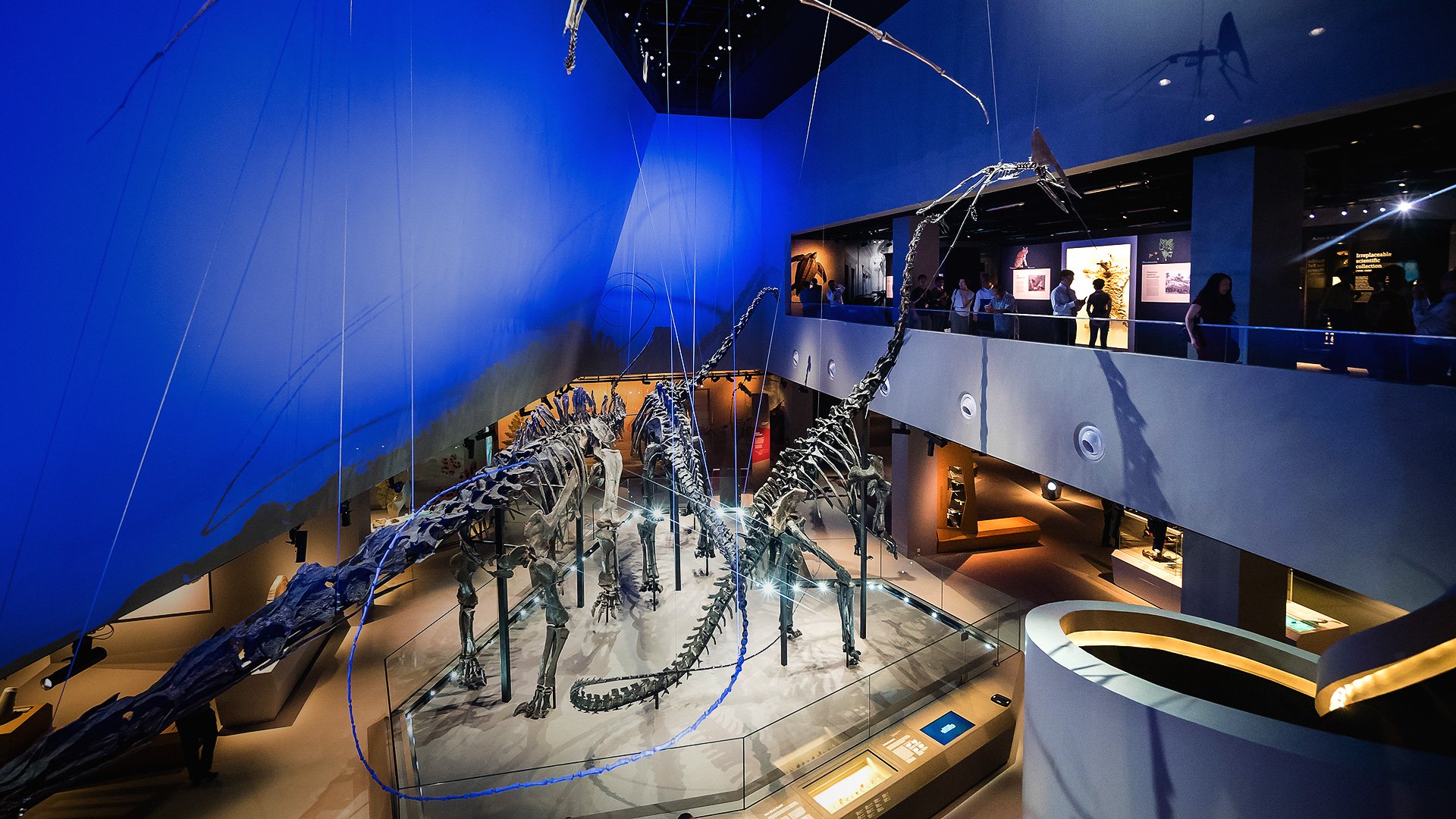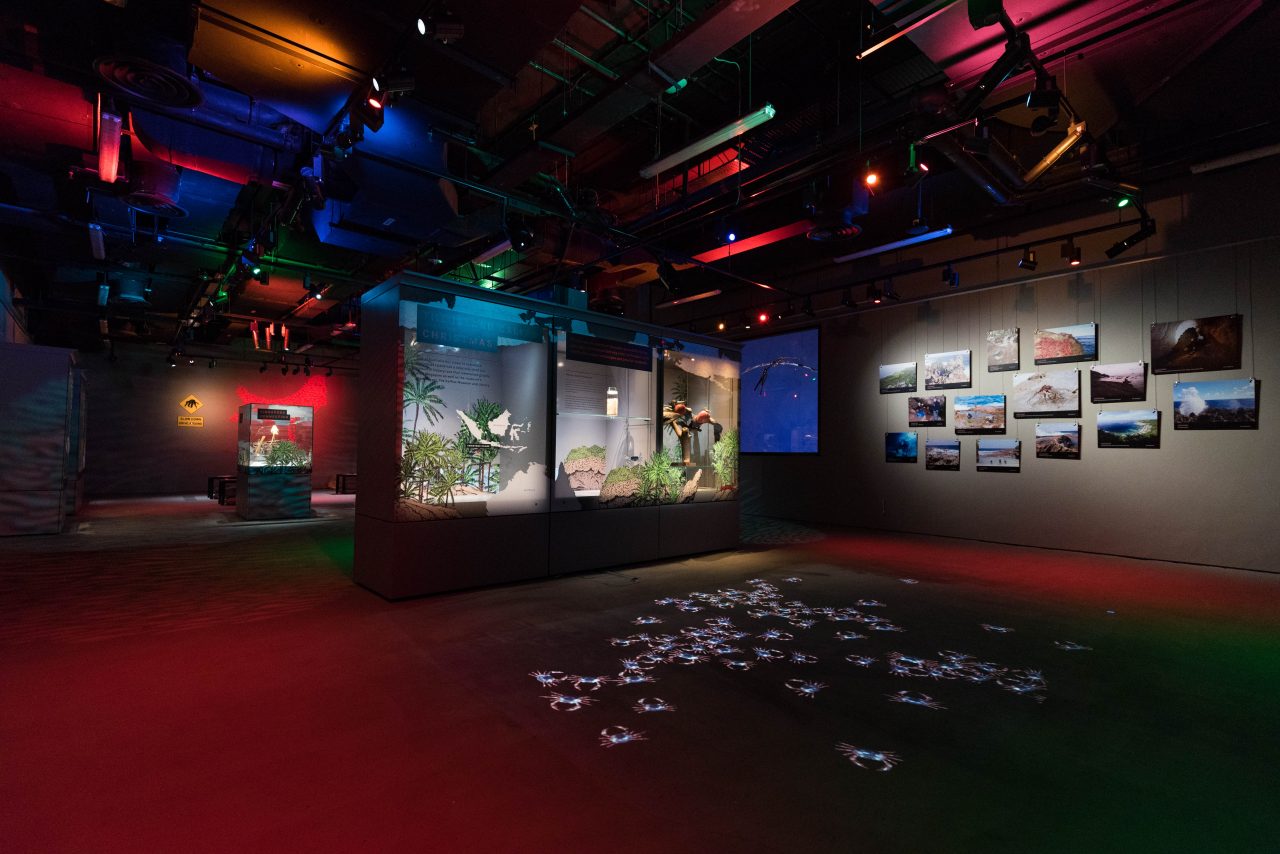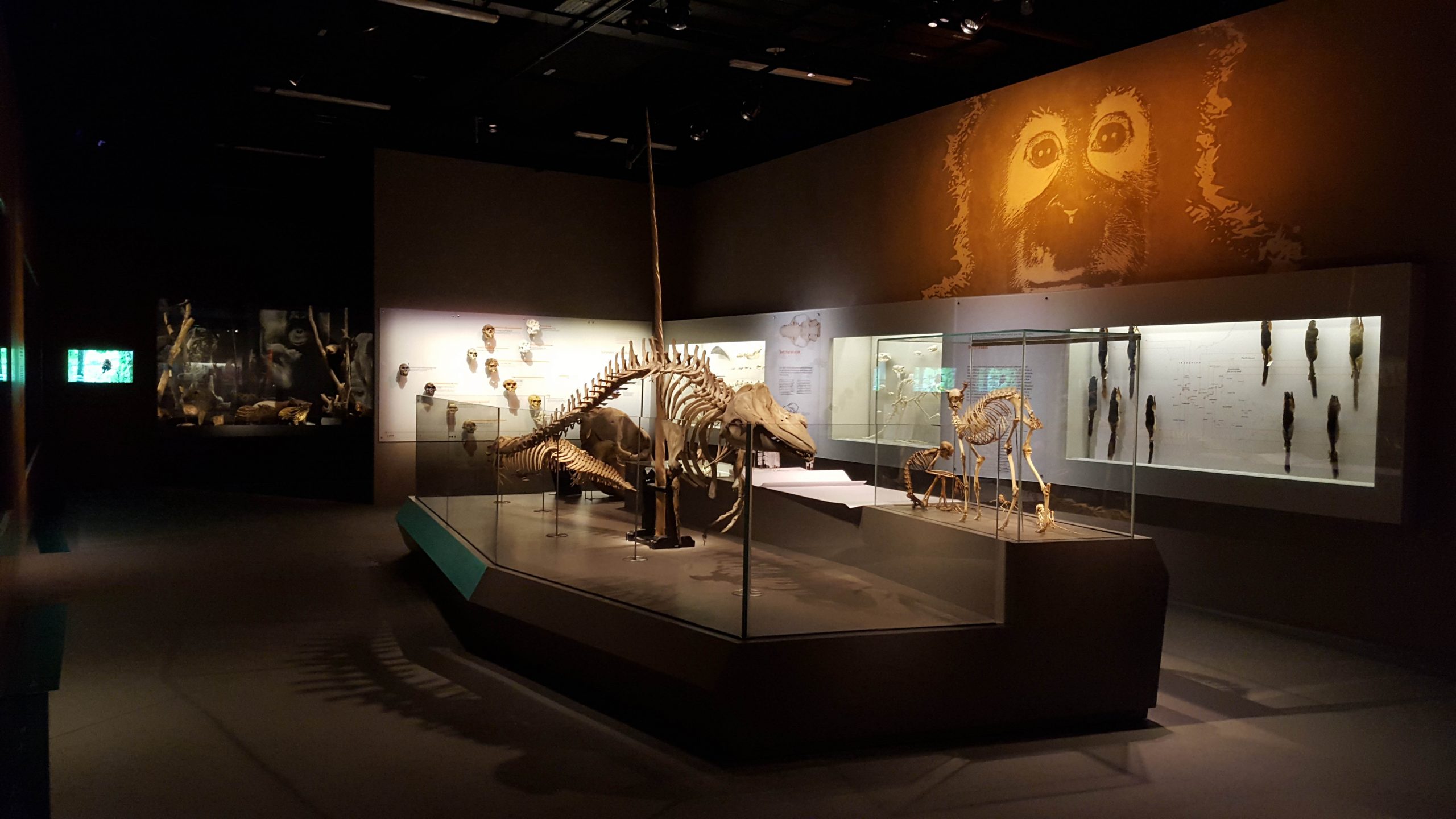Scientific Talks
The Lee Kong Chian Natural History Museum organises a wide range of public talks for both the scientific community and members of the public.
UPCOMING TALKS
Christmas Island: its History and People and the Aspirations of the Islanders (4 March 2018)
Mr Tan Seng Chye – Senior Fellow at RSIS, NTU and former Ambassador to Thailand, Myanmar, Australia,
Philippines, Laos and Vietnam
Lee Kong Chian Natural History Museum 1M Learning Lab, 2pm

As an islander who has lived on Christmas Island. Mr Tan Seng Chye will talk about the history of Christmas Island, the people and their way of life and their eventual migration to Australia in the 1960s, mainly to Western Australia. Phosphate mining industry was the main industry. The talk will focus on the aspirations of the islanders and their adaptability to build successful lives and also highlight the beauty of the island with the many varieties of fauna and flora as well as the great variety of birds and the crabs there.
PAST TALKS
Out of the Blue: Christmas Island’s Marine Crabs and its Allies (10 February 2018)
Dr Jose CE Mendoza, Museum Officer, LKCNHM
Lee Kong Chian Natural History Museum 1M Learning Lab, 2pm

Summary
Christmas Island has been famous for its land crabs for as long as one can remember. Recent work emanating from the Lee Kong Chian Natural History Museum has shown that the land crab diversity is far richer still. The topic of this talk, however, will focus more on the marine crabs and their relatives in the crustacean order Decapoda. How much is known to date about these amazing animals and what surprises does the Island still keep deep in its crystal blue waters? How many species are there, and do they have a future in this time of global environmental change? The talk will also provide anecdotes on the experiences of the museum team in the recent surveys on the decapod crustaceans of Christmas Island.
Marine and Cave Features of Christmas Island (13 January 2018)
Lee Kong Chian Natural History Museum 1M Learning Lab, 2pm

Summary
The inshore and marine cave fauna, along with marine fauna of Christmas Island will be showcased. Unique and endemic fauna will be highlighted, including new records, footage and anecdotes. This is cumulative from 6 trips conducted from 2007 to 2017, inclusive of 4 scientific expeditions conducted under auspices of NUS and Christmas Island National Park.
About the Speaker
Heok Hui graduated from NUS with a PhD in 2003, based on systematic work with Borneo Suckers. He had been involved with mainly freshwater works in Southeast Asia since 1992 having published extensively and describing more than 110 fish species new to Science. He has been more recently involved with marine surveys in Christmas Island, Japan, Papua New Guinea, Vanuatu, New Caledonia and Singapore (Comprehensive Marine Biodiversity Survey of Singapore).
Ants of Kagoshima – Rising Above the Ashes

Kagoshima – Land of Volcanoes
More than 10% of Japan’s 108 active volcanoes are located in Kagoshima, South Kyushu. During the past 30,000 years, great eruptions twice exterminated nearly all biota of Kagoshima and for 900 years after the great eruption of the Kikai Caldera ca. 7,300 years ago, which also wiped out the ancient Jômon people, Kagoshima was a sterile land without trees.
Ant Diversity vs Volcanoes
Despite repeated disturbances including recent eruptions, Kagoshima’s ant fauna is relatively rich with > 140 species – slightly less than half the total number of species in all of Japan. Species composition and characteristics reveal reasons for this unusual persistence of diversity. Faunal research on lavas of different ages on Sakurajima volcano shows gradual recovery of ant communities along with forest development. A rare case of ant colonies surviving without vegetation after a pyroclastic flow on Shindake volcano is also documented.
About the Speaker
Professor Seiki Yamane is a recognized expert on Asian ant fauna. He has studied and collected ants worldwide for over 30++ years, making myriad new discoveries and invaluable contributions to Asian ant taxonomy. Currently, he is Professor Emeritus at Kagoshima University, as he soldiers on in tireless pursuit of his passion for ants.
The Unnoticed Wonder of Acalyptrate Flies

Flies are one of the most diverse insect orders, and the family-level diversity is centred in the acalyptrates. The ecological diversity of acalyptrate flies is incredible, with bizarrely specialised parasites and saprophages to devastating agricultural pests. Many of these lift histories evolved multiple times independently.The morphological diversity of acalyptrate flies is similarly vast, ranging from huge stilt-legged micropezids to tiny spherical xenasteiidsto wingless files.
This morphological diversity is often correlated with ecology, such as mantis-like legs on tiny predator flies, or elaborate egg laying structures in parasites and phytophages. Some of the most striking acalyptrate flies are the most poorly understood in their evolutionary context. We will also explore the opportunities and challenges in the current strategies for recovering the phylogenetic relationshipsof acalyptrate files and their relatives.
Unmasking the Vigilantes of Pest Control
Parasitoid wasps play vital ecological roles as natural controllers of insect populations, including harmful pests. Adults lay eggs on doomed host insects, which are eventually consumed by ravenous larvae that hatch from these eggs.
Wasp from the family Ichneumonidae forms one of the largest and most species-rich insect groups, with about 100,000 species worldwide. Despite their ecological importance and hyperdiversity, very little is understood about Ichneumonids worldwide. Only 30% of all estimated species have been formally described, of which 4000 occur in Southeast Asia: merely 68 have been recorded from Singapore.
With the help of high throughput DNA barcoding techniques, these numbers are set to grow more Ichneumonid species from both Singapore and other parts of this region await discovery and description

Foraminifera in the abyssal nodule fields of Singapore exploration area, eastern equatorial Pacific
Foraminifera, testate (i.e. shell-bearing) protists, are a major and ubiquitous component of the marine benthic biota from estuarine and intertidal habitats to the deepest ocean trenches. in coastal and continental slope settings, assemblages comprise a mixture of ‘advanced’ multichambered taxa, including those with a calcareous test, and ‘primitive’ single-chambered forms (‘monothalamids’). At greater depths, however, as the food supply diminishes, monothalamids become increasingly important and are often the dominant faunal component on abyssal plains (>3500 m depth). This talk describes present recent research on benthic foraminifera discovered in the Singapore exploration area of the Clarion Clipperton Zone (4050-4300 m depth). With increasing human intervention in the deep ocean, awareness is growing of the importance of conserving the pristine environment and its biota. In this context, there is a particular need to describe the rich protistan biodiversity within the CCZ using a combination of morphological and genetic data, and to gain a better understanding of broader biogeographic patterns so that we can better assess the vulnerability of species to extinction as a result of activities such as seabed mining\

Battle of the Deep: Sperm Whales and Giant Squids By Dr. Kubodera
The battles between giant squids and sperm whales have inspired legends over centuries, and still captures the imagination and curiosity of people today. In this talk, Dr Kubodera will shine a light on the large squids that live in the “twilight zone” of the sea, and the deep-diving sperm whales that hunt them. His own hunt to study these large squids over the last 40 years would make him the first person to film a giant squid in its natural habitat off Ogasawara, Japan in 2012. Come relive the moment as he shares about the giant squid filming project that became an international award winning documentary.
Dr Tsunemi Kubodera is Curator Emeritus & Honourable Member of the the National Museum of Nature and Science in Tokyo, Japan. He and his team are the first to both photograph and film a live Giant Squid in its natural habitat!
Sperm Whales by Tony Wu
Starting from his first encounter, when a sperm whale slammed him with sound waves, and took him in its mouth… Join us as Tony takes us through his 17-year learning process, where he experiences swimming among pods of whales in hundreds, perhaps thousands. He will relate his encounters with what we seemingly know and speculate, in the academic context, about the mysterious giant mammals of the deep.
About Tony Wu:
Winner of the 52nd (2016) and 46th (2010) Wildlife Photographer of the Year award (Underwater category) organised by the Natural History Museum in London, Tony Wu is a photo-naturalist and a full-time marine photographer. His primary focus is observing, understanding, documenting behaviour and the contexts in which these animals live. Previously a “productive member of society with a normal job”, he quit in 2001 to devote his life to the oceans. He loves everything in the sea, but in recent years has spent most of his time working with large cetaceans.




